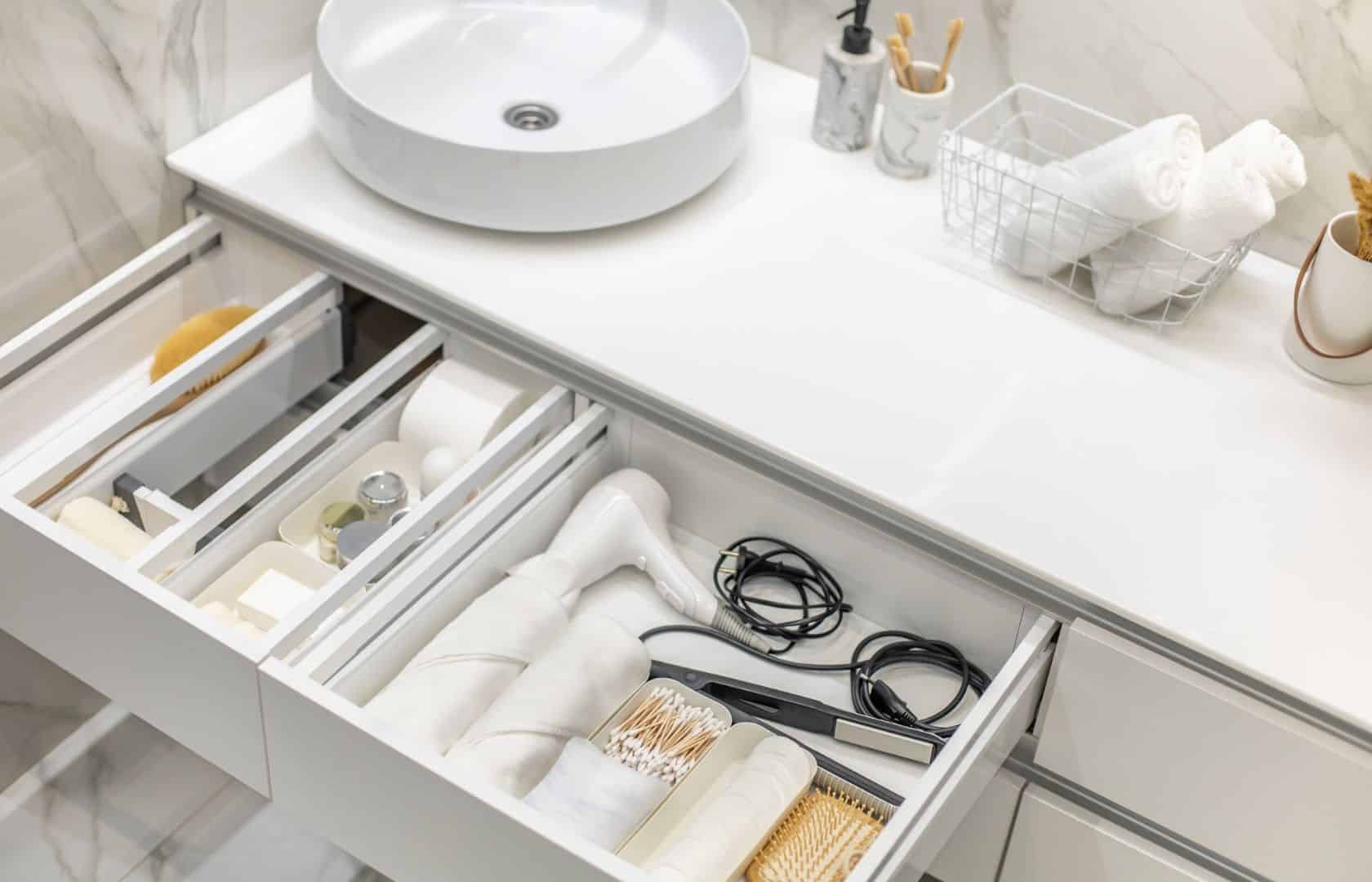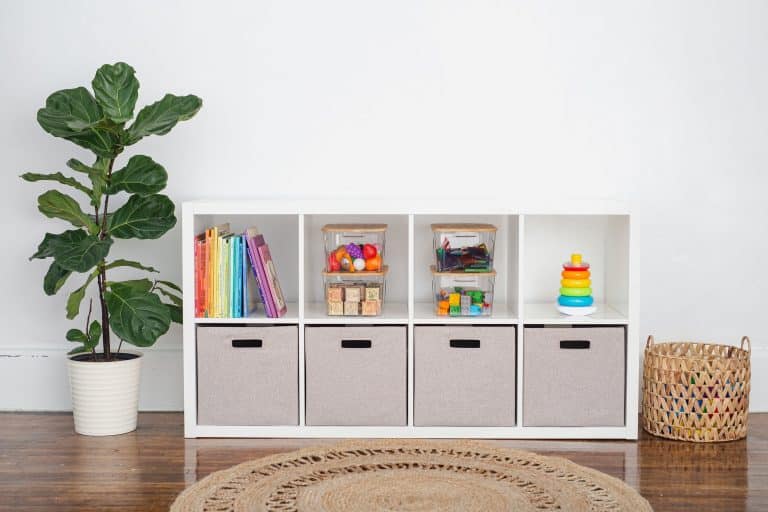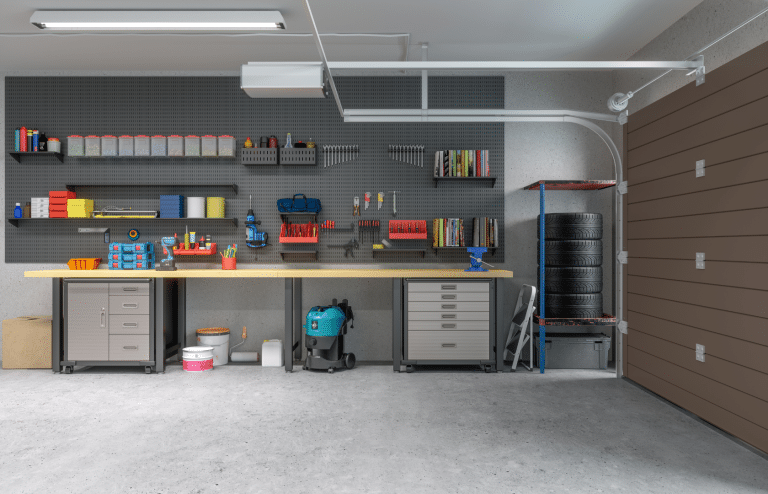The Secret To A Tidy Home: Clutter Boundaries
As an Amazon Associate and member of other affiliate programs, I earn from qualifying purchases.

What do you think of when you hear the word ‘boundaries’? My guess is you envision saying ‘no’ to people in an effort to protect your peace, yes? We tend to think of boundaries as they relate to our relationships (MIL, boss, semi-toxic friend.) If we are brave with our boundaries we can keep emotional chaos at bay. But they can be so helpful in many other aspects of our lives, like keeping your home a clutter-free paradise!
Establishing clutter boundaries with yourself and for yourself is a great strategy to protect the peace of your home. Here are some helpful boundaries to practice that will keep the clutter at bay.
Storage Boundaries

When you have done the hard work of decluttering and designated homes for all the things in your home, take stock of the spaces that contain them. A drawer, a closet section, a bin: these now represent storage boundaries you can apply when you get the urge to buy something new in that category. An easy example is a T-Shirt drawer – the space you have designated to contain your tees. If your T-Shirt drawer is full there is no need for you to purchase any new ones. Why? Because you have reached your storage boundary. The boundary also serves as a visual reminder when you are hitting the limit. Or, in the case of consumable things, when you are running low and need to replenish. When the snack bin is looking sparse it’s time to stock up. When you’re stuffing your jackets into the coat closet it’s time to declutter.
I have certain categories I’ve identified as weak spots that I have to be vigilant about. I work out a lot and am often seduced by cute leggings, sports bras and running shorts. When I go to grab my workout stuff each night before bed I’m reminded that I can’t fit any more of those categories into their designated drawers until I get rid of something. That brings me to another example of clutter boundaries!
One-In-One-Out

This boundary is just as simple as it sounds. When you bring something new into your home something else has to go out. It’s a bit harder in practice; our instinct is often to make room for new things by investing in more storage. One strategy I’ve used recently is to acknowledge when something is past its season and no longer relevant to my life today. Case in point, I’ve been considering getting an Air Fryer but have no room for another small appliance in my kitchen. (Plus I’m fanatical about clear counters, but that’s another post.) As momentum has built around this Air Fryer idea, I took the time to review my small appliance inventory. Was there anything that’s past its season? Turns out that spiralizer I was into for a few years hasn’t been touched in ages – I still eat lots of zucchini but cutting it up is way less effort. That is my target for what will go when I get that Air Fryer. (It’s on my Mother’s Day list – here’s the one I’m eyeing!)
Your closet is another good area to practice one-in-one-out. Whenever you get something new take a few minutes to sift through and find something else that you haven’t reached for in forever. If you practice this on the regular you’ll never have to declutter again because you will be living within your own clutter boundaries.
Shop Only From A List

If you like to shop like I do, then keeping lists is a great clutter boundary to practice. You can keep lists for almost any category: groceries, wardrobe needs, decor, gifts, etc. The key is to acknowledge the need you’ve identified by adding it to a list. Then, when you have the urge to shop you confine yourself to the list. So you get the pleasure of the shopping experience without adding a bunch of clutter you don’t need. If I didn’t keep a grocery list and stick to it there’s no limit to what I’d be tempted by at Whole Foods or Trader Joe’s (!) It’s a really useful boundary that also saves me time and money.
If you practice these clutter boundaries you are almost completely eliminating the risk that clutter will ever build up in your home again. In addition they are useful habits for saving money that you would otherwise be spending needlessly. I’m a huge fan and use them all the time with my coaching clients, to great success! Try them out and let me know what you think!







Method Seattle Comment Policy
We welcome relevant and respectful comments. Off-topic comments may be removed.
2 Comments